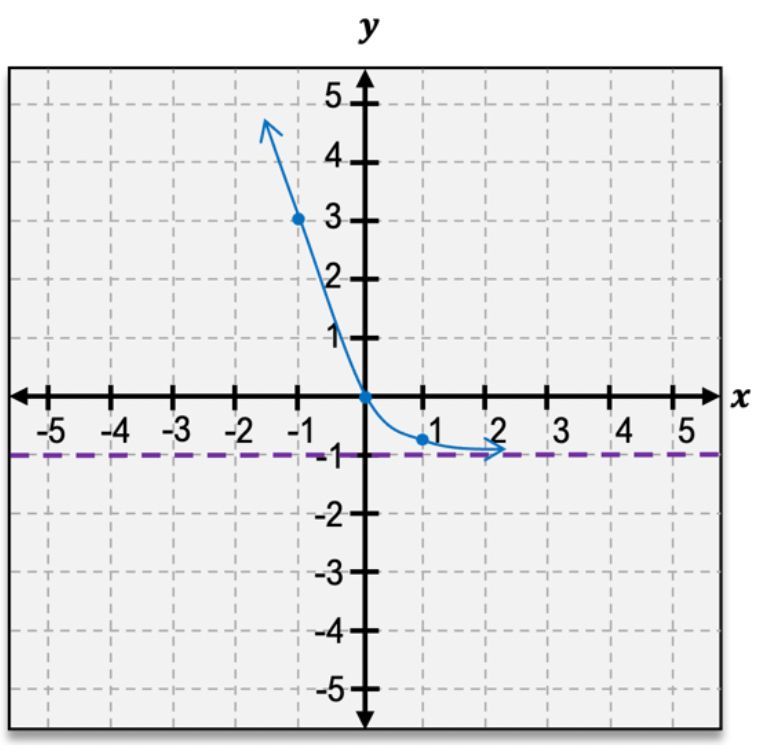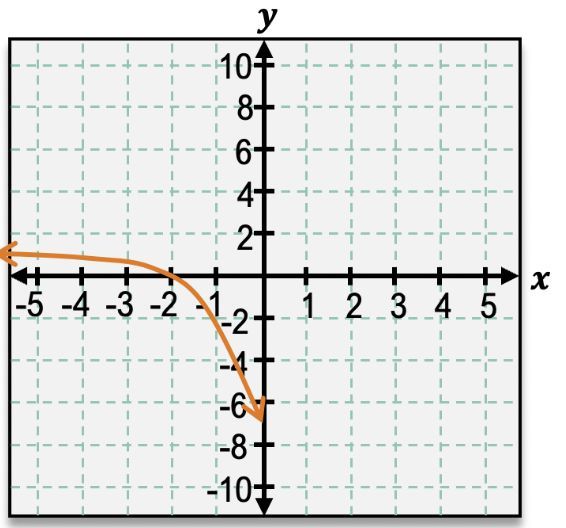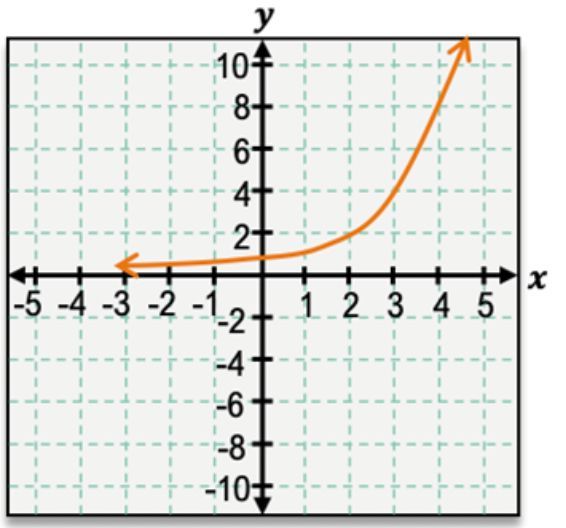Hey, everyone. Whenever we graphed polynomial and rational functions, we had to consider a lot of different components. We looked at things like the end behavior and any intercepts of our graph and even had to consider and find multiple asymptotes sometimes when working with these functions. Now that we're faced with graphing exponential functions, you may be worried that there's going to be a lot of new and different things that we have to remember in order to fully graph them. But here we're going to walk through graphing the exponential function \( 2^x \) together, and I think you'll find that it's actually even more simple and more straightforward than graphing any polynomial or rational function. So let's go ahead and get started here.
Now here we're going to be graphing \( 2^x \), so let's start by just plugging in some values for x and getting some ordered pairs to plot on our graph. So, starting with \( x = 0 \), if I plug that into my function, I get \( 2^0 \), which is simply 1 because anything to the power of 0 is 1. That first point I can plot is right at 1. Then moving on to \( x = 1 \), plugging that into my function, I get \( 2^1 \), which is simply 2. So, that next point is at 12 that I can plot on my graph. Then as x continues to get larger, I'm going to get \( 2^2 \), which is simply 4, and then \( 2^3 \) which is 8. And if I took it all the way up to \( x = 10 \), I would get an even larger number, this 1,024. So I can see that as x continues to increase, \( f(x) \) will continue to increase as well. So let's plot those last two points at 24 and at 38. Now looking at this side, I can go ahead and connect all of these points because I know it's going to increase. So I see that as x goes to infinity, \( f(x) \) also goes to infinity. That's my end behavior on that side.
Now let's consider if x is negative. So starting with \( x = -1 \), if I plug that into my function, I get \( 2^{-1} \), which, knowing our rules for exponents, this is simply going to be \( \frac{1}{2} \). That point is at negative one, one half. And then as x gets more negative, \( -2 \) and \( -3 \), it continues to get smaller and smaller on that side. So we see that we're going to get really close to 0, but not quite 0. So I can go ahead and connect my points on this side. I see that I'm getting really close to that x-axis there. So as x approaches a negative infinity, I see that \( f(x) \) actually approaches 0. Now something I said there might have sounded familiar. We're going to get really close to 0 but not quite touch it because that's what we know as an asymptote. So we do have an asymptote. It is a horizontal asymptote right on that x-axis at y equals 0. Remember, we can plot asymptotes by using a dashed line. So here I have my dashed line right at y equals 0.
Now taking a full look at our graph here, looking first at this right side, I see that as we increase, we look kind of similar to what we've seen with polynomial functions. Now another similarity that our graphs of exponential functions have to polynomial functions is that they are always going to be continuous, meaning that there are no breaks in our graph. So we see that there are no breaks in this graph. It is continuous. Now looking at the other side of our graph here as we approach that asymptote, we know that we have asymptotes when dealing with rational functions. So another similarity that we may have to rational functions here is that our function is going to be 1 to 1 the way that some rational functions are. This just means that no 2 x's result in the same y or we could pass the horizontal line test. If I draw a horizontal line, it's only going to cross through one point on my graph.
Now looking at the complete shape of the graph of my exponential function, this is always going to be the shape. And a way that you can remember this is exponential function starts with e. So if I take a lowercase e and I just extend that tail out, it looks really similar to the shape of this graph. Now that we have a complete picture of our graph here, let's also consider the domain and range here. So the domain of any exponential function is actually always going to be the same. It's always going to go from negative infinity to positive infinity or simply all real numbers. This is the same for any exponential function. Now your range is a little bit more complicated, but it just depends on your asymptote. So it's always going to depend on the placement of our asymptote here. And here my asymptote is at 0, and I see that all of my y values are above that. So I know that my range here is going to go from 0 to infinity, but not including 0 because I am, of course, not touching that asymptote.
Now that we have a good picture of our graph of \( 2^x \), let's take a look at some more exponential functions. As we look at different exponential functions of the form \( f(x) = b^x \), we're going to see that the direction and the steepness of our graph is going to depend on the value of b, the base of our function. Looking at if b is greater than 1, like something like 2 or 5, I'm going to see that whenever I have that b greater than 1, my graph is always going to be increasing and going up on that side. Whereas if b is between 0 and 1, so it's something like 1 half or 1 fourth, I'm instead going to have a graph that decreases. Now, of course, also the steepness will depend on this value of b. And here we consider b greater than 1. You see that as we increase from 2 to 5, our graph gets steeper. And that's because for values of b, our base that are greater than 1 like 2 or 5, our graph is going to get steeper for larger values of b. Now it's actually the opposite when working with values of b between 0 and 1, those fractions, where we see that as we go from 1 half to 1 fourth on our graph, as we get smaller, it actually gets steeper there. So for values of b between 0 and 1, our graph is actually going to get steeper for smaller values of b, so the opposite of if b is greater than 1. So now that we have a complete picture of the graphs of our exponential functions, let's get some more practice. Thanks for watching and let me know if you have any questions.











